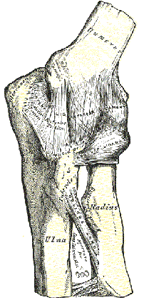
Yin and yang are relative terms and need a context to be appropriately applied. They can be used as adjectives, although they are often used as nouns. Within our bodies, if we use the context of position or density, the yang tissues could be said to be our muscles, blood, and skin compared to the yin tissues of ligaments, bones, and joints. The contexts of flexibility or heat could also be used; muscles are elastic, bones are plastic. [1] Muscles love to get hot while ligaments generally remain cool. However, we are not making an absolute definition here. In the context of water content, the muscles are yin and the ligaments are yang. Muscles love to get juicy, thus, they have lots of water in them, which is a yin quality; ligaments have less water content, which means they are relatively yang.
Despite the context of water, there are more ways in which the muscles are yang-like relative to the ligaments than they are yin-like. This is one reason this particular style of yoga is called Yin Yoga. Yang styles of yoga generally target the muscles and employ rhythmic, repetitive movements to stress the fibers of the muscles. Being elastic and moist, the muscles appreciate this form of exercise and respond well to it. Yin tissues, however, being dryer and much less elastic, could be damaged if they were stressed in this way. Instead, the more plastic tissues appreciate and require gentler pressures, applied for longer periods of time, in order to be stimulated to grow stronger. This is why orthodontic braces must be worn for a long time, with a reasonable (and not always comfortable) amount of pressure, in order to reshape the bones of the jaw.
Our joints can be seen simply as spaces between the bones where movement is possible. Stabilizing the joint are ligaments, muscles, and tendons, which bind the bones together. The tendons and muscles also provide a force to move the bones relative to each other. Generally one of the muscles’ jobs is to protect the joint; if there is too much strain on the joint, the muscle will tear first, then the ligament, and then finally the joint itself may become damaged. In this regard, yang yoga is designed to not stress the joint. This is why there is so much care taken to align the body and engage the muscles correctly before coming into asanas in the yang practice. However, Yin Yoga is specifically designed to exercise the ligaments and to create space and strength in the joints. The topic of tissues is discussed more fully in the Chapter Three: Our Bodies and Yoga’s Benefits.
An example can help explain the different roles of the muscles and ligaments. Take your right index finger in your left hand. Tighten the muscles of the right finger and try to pull it away from the knuckle. Notice that there is no movement there. The muscles’ job is to bind the bones together and limit the range of motion allowed in the joint. Now relax the finger completely. Shake it out for a moment. Now, keeping the muscles passive again, try to pull the finger away from the knuckle. Notice the slight dimpling there? Perhaps you can feel only the slight pulling away. When the muscles are relaxed the stress is moved to the ligaments binding the joint. The joint can open a little now and the ligaments can receive some of the stress. The first exercise was yang-like, whereas the second exercise was yin-like.
(Next: The Theory of Exercise )
